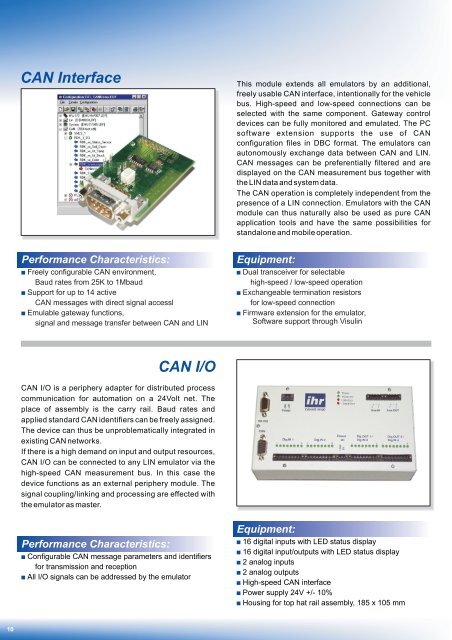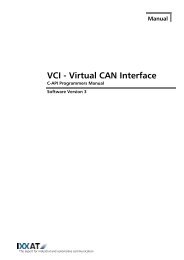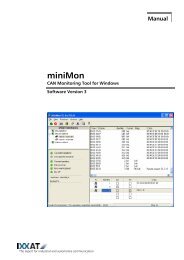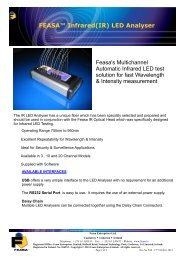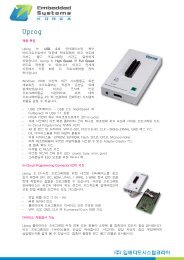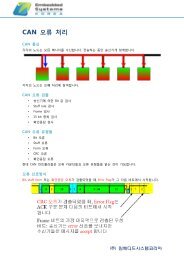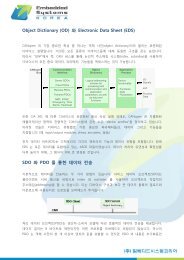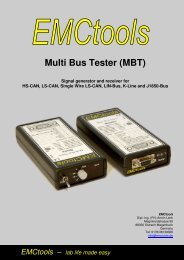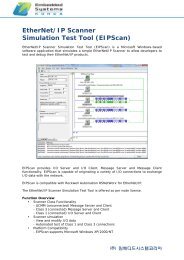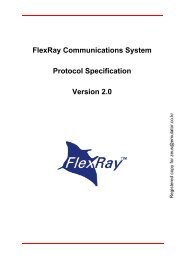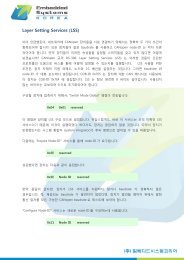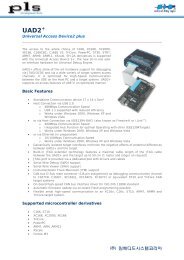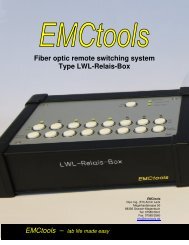LIN Tools
LIN Tools
LIN Tools
You also want an ePaper? Increase the reach of your titles
YUMPU automatically turns print PDFs into web optimized ePapers that Google loves.
10<br />
CAN Interface This module extends all emulators by an additional,<br />
freely usable CAN interface, intentionally for the vehicle<br />
bus. High-speed and low-speed connections can be<br />
selected with the same component. Gateway control<br />
devices can be fully monitored and emulated. The PC<br />
software extension supports the use of CAN<br />
configuration files in DBC format. The emulators can<br />
autonomously exchange data between CAN and <strong>LIN</strong>.<br />
CAN messages can be preferentially filtered and are<br />
displayed on the CAN measurement bus together with<br />
the <strong>LIN</strong> data and system data.<br />
The CAN operation is completely independent from the<br />
presence of a <strong>LIN</strong> connection. Emulators with the CAN<br />
module can thus naturally also be used as pure CAN<br />
application tools and have the same possibilities for<br />
standalone and mobile operation.<br />
Performance Characteristics: Equipment:<br />
<br />
<br />
<br />
Freely configurable CAN environment,<br />
Baud rates from 25K to 1Mbaud<br />
Support for up to 14 active<br />
CAN messages with direct signal accessl<br />
Emulable gateway functions,<br />
signal and message transfer between CAN and <strong>LIN</strong><br />
CAN I/O<br />
CAN I/O is a periphery adapter for distributed process<br />
communication for automation on a 24Volt net. The<br />
place of assembly is the carry rail. Baud rates and<br />
applied standard CAN identifiers can be freely assigned.<br />
The device can thus be unproblematically integrated in<br />
existing CAN networks.<br />
If there is a high demand on input and output resources,<br />
CAN I/O can be connected to any <strong>LIN</strong> emulator via the<br />
high-speed CAN measurement bus. In this case the<br />
device functions as an external periphery module. The<br />
signal coupling/linking and processing are effected with<br />
the emulator as master.<br />
Performance Characteristics:<br />
<br />
<br />
Configurable CAN message parameters and identifiers<br />
for transmission and reception<br />
All I/O signals can be addressed by the emulator<br />
<br />
<br />
<br />
Dual transceiver for selectable<br />
high-speed / low-speed operation<br />
Exchangeable termination resistors<br />
for low-speed connection<br />
Firmware extension for the emulator,<br />
Software support through Visulin<br />
Equipment:<br />
16 digital inputs with LED status display<br />
16 digital input/outputs with LED status display<br />
2 analog inputs<br />
2 analog outputs<br />
High-speed CAN interface<br />
Power supply 24V +/- 10%<br />
Housing for top hat rail assembly, 185 x 105 mm


